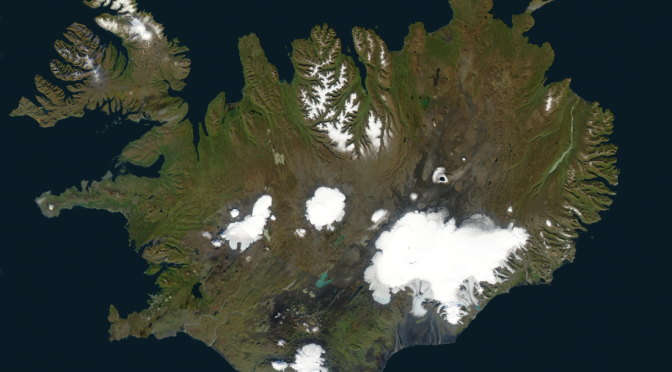Iceland is situated in the North Atlantic Sea, on the volcanic mid-Atlantic ridge. The closest neighbouring landmass is Greenland on the opposite side of the 300 km wide Greenland sound.
The name Iceland was given to the island by the Norwegian viking seafarer Floki.
History
Iceland was first settled in the 9th century AD by Norsemen coming from Scandinavia and the British isles, most likely also bringing with them people of Irish and British ancestry. Around year 1000 Iceland officially became Christian.
In 1262 the Icelanders acknowledged the king of Norway as the ruler of Iceland, successively leading to the island becoming the junior partner in a union with Denmark from 1380. During the middle ages and the renaissance Iceland became more a colony under Denmark than a realm of its own. It was first in 1874 that it got its own constitution while still in union, More in-depth self-rule wasn’t provided for until 1918.
When Denmark got invaded and occupied by Nazi Germany in 1940, Iceland was preemptively “occupied” by Allied forces. In 1944 Iceland declared itself fully independent from Denmark and became a republic. After the war the country was one of NATOs founding members, although the country lacked – and still lacks – its own military forces.
Government
The Icelandic parliament – the Althing – has a history going back to AD 930 when the first known Althing was held at Thingvallavatn north-east of Reykjavik. Since Iceland’s independence from Denmark in 1944, the Althing has the sole legislative power and elects the prime minister.
The president, who is elected in direct elections every fourth year, is the head of state but has mostly ceremonial duties. He or she – Iceland was in 1980 the first country in the world to have a woman, Vigdis Finnbogadóttir, elected head of state in a direct election – may however veto new laws by refusing to sign them into law. Such a refusal is very rare but has occured.
Population
Iceland is the most sparsly populated country in Europe with around half the population living in the Reykjavik area. Large parts of the inland is nearly uninhabited.
The language is Icelandic, a Germanic language with its roots in old Norse and which hasn’t changed much since medieval times. There is an active and deliberate effort to keep the number of loanwords from other languages at a minimum.
When it comes to religion most Icelanders are still protestant Christians, although in a rather secular fashion.
Economy
Historically Iceland’s economy has been depending on fisheries and sheep farming. In more recent times this has shifted somewhat as the big energy resources available in the form of geothermic and hydro energy has made the country interesting for energy-demanding industry such as aluminium smelting. Also tourism has naturally become a bigger part of the economy.
The climate, the geographical distances, and the lack of mineral resources however means that many commodities have to be imported, leading to high prices.
Culture and travel
In the southwest lies Thingvellir, where the old Althing met and decided on common affairs and judged on feuds. Today there’s still buildings providing for meetings of the modern day Althing here, as well as a church and the landscape itself.
Not far from Thingvellir is one of the most beatiful waterfalls, Gullfoss, and a geyser area.
Another unique nature experience is the road along the southern coast with views over the glaciers of Vatnajökull.
